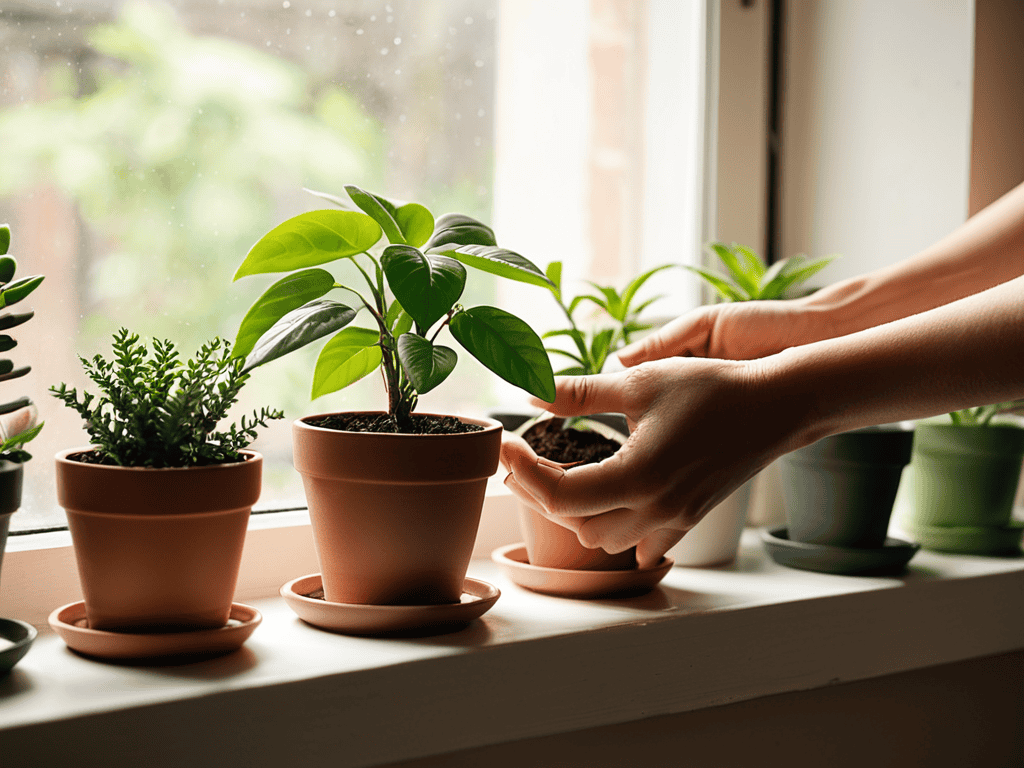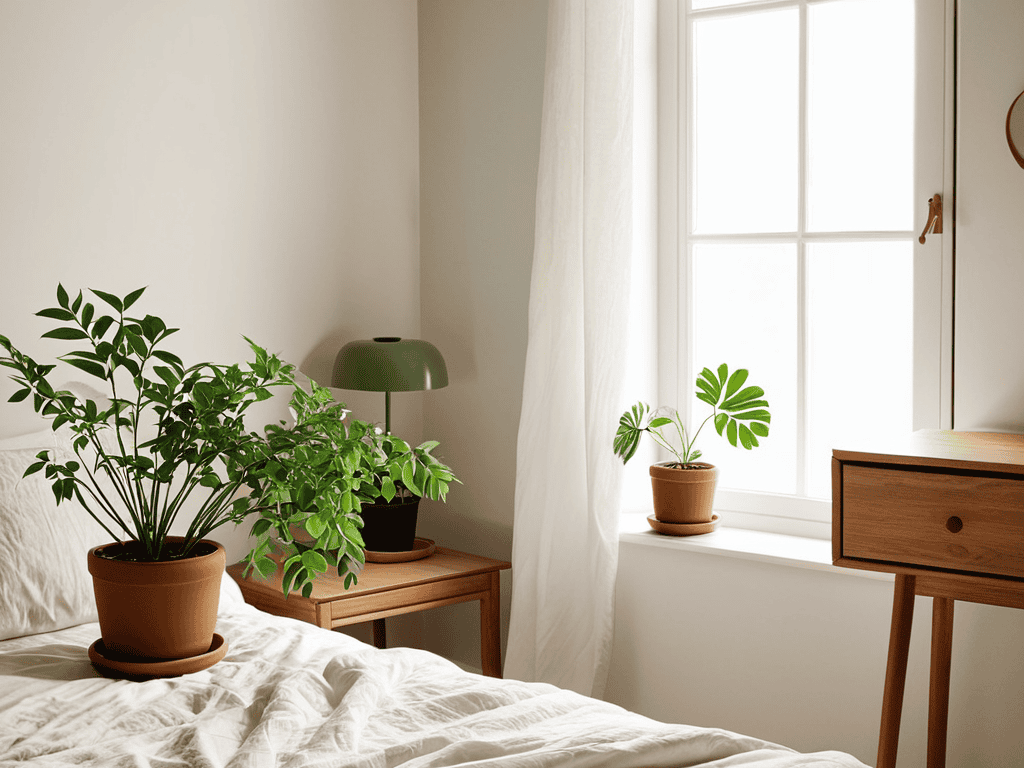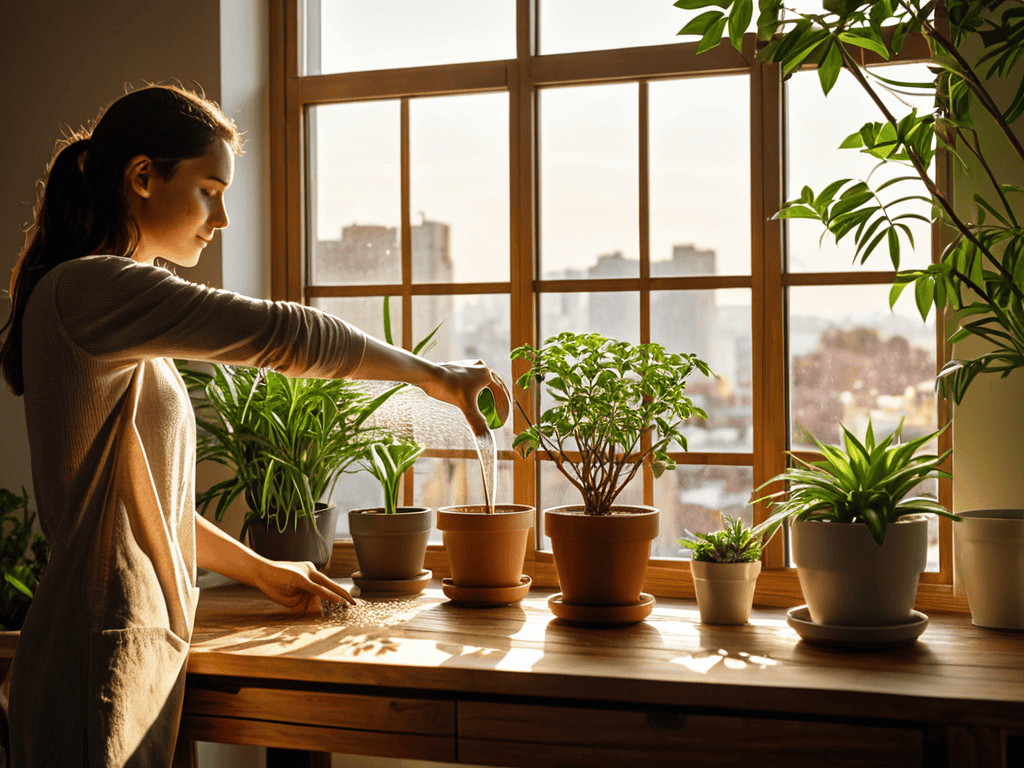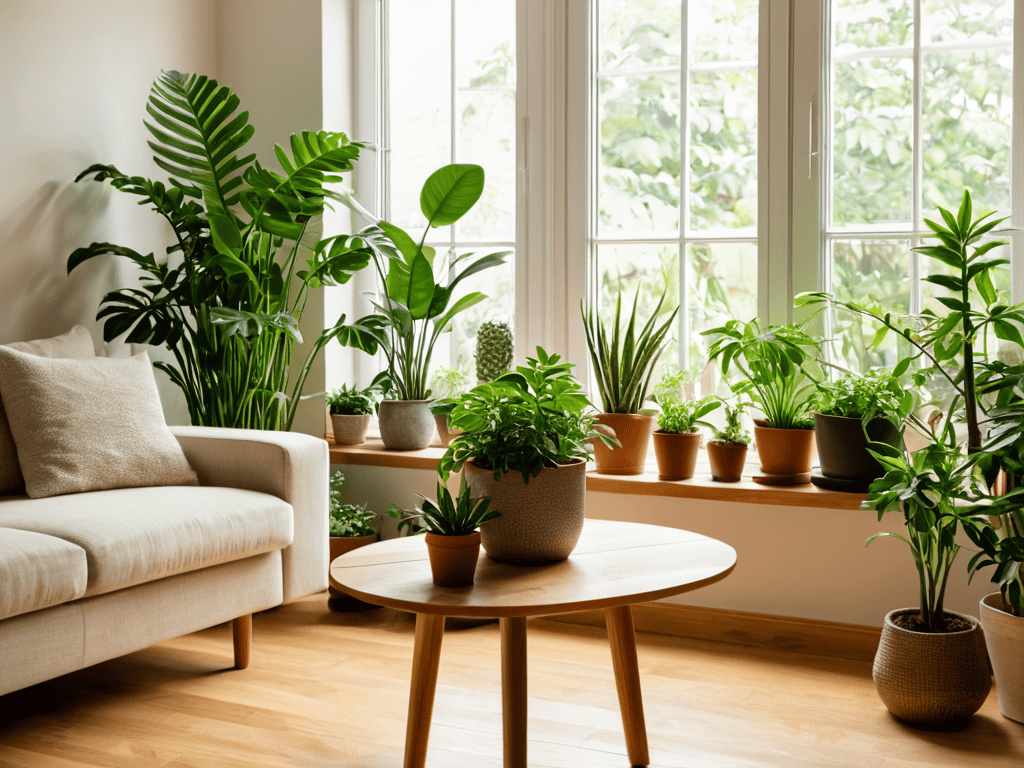As I sit here surrounded by the lush greenery of my own little indoor jungle, I’m reminded of the countless times I’ve heard people say that choosing the right indoor plant for your space is a matter of luck. But I’m here to tell you that it’s not just about picking a pretty face – it’s about finding a companion that thrives in your unique environment. That’s why I’ve put together a guide to choosing the right indoor plant for your space, to help you navigate the world of indoor plants and find the perfect match for your home.
In this article, I’ll share my personal experiences and expert advice on how to select an indoor plant that will not only purify the air and improve the aesthetic of your space, but also bring you a sense of joy and connection to nature. You’ll learn how to assess your space, consider factors like lighting and temperature, and choose from a variety of low-maintenance plants that are perfect for busy people. By the end of this guide, you’ll be equipped with the knowledge and confidence to create your own thriving indoor oasis, and discover the simple pleasures of nurturing a living, breathing companion in your home.
Table of Contents
- Guide Overview: What You'll Need
- Step-by-Step Instructions
- A Guide to Choosing Right Indoor Plants
- Leafing Through the World: 5 Essential Tips for Finding Your Perfect Indoor Plant Match
- Key Takeaways for the Perfect Indoor Plant Companion
- Nurturing Life
- Bringing Life to Your Space
- Frequently Asked Questions
Guide Overview: What You'll Need

Total Time: 1 hour 15 minutes
Estimated Cost: $20 – $50
Difficulty Level: Easy
Tools Required
- Measuring Tape (to measure space)
Supplies & Materials
- Various Indoor Plants such as snake plants, spider plants, or peace lilies
- Plant Pots in different sizes, up to 12 inches in diameter
- Potting Soil
- Watering Can
Step-by-Step Instructions
- 1. First, let’s start by assessing the natural light in your space, as this will play a huge role in determining which indoor plant will thrive. Take a moment to observe how the light falls in your room throughout the day – is it direct, indirect, or a mix of both? This will help you narrow down your plant options, as some plants love basking in direct sunlight, while others prefer the soft glow of indirect light.
- 2. Next, consider the temperature fluctuations in your space, as most indoor plants prefer daytime temperatures between 65-75°F (18-24°C) and nighttime temperatures 5-10°F (3-6°C) lower. If you have a space with drastic temperature swings, you may need to choose a hardier plant that can adapt to these changes. I’ve found that plants like succulents and cacti are great for spaces with temperature fluctuations, as they’re incredibly resilient.
- 3. Now, think about the humidity levels in your space, as some plants thrive in more humid environments, while others prefer drier conditions. If you live in a particularly dry climate, you may need to choose plants that can tolerate low humidity or take steps to increase the moisture levels around your plants, such as placing them on a tray filled with water and pebbles. I’ve learned that grouping plants together can also help create a more humid microclimate, which can be beneficial for plants that prefer higher humidity.
- 4. Consider your lifestyle and maintenance habits, as some plants require more attention and care than others. If you’re a busy traveler like myself, you may want to opt for low-maintenance plants like air plants or snake plants that can survive with infrequent watering. On the other hand, if you enjoy nurturing your plants, you may prefer more high-maintenance options like orchids or bonsai trees that require regular pruning and care.
- 5. Think about the style and aesthetic you want to achieve in your space, as indoor plants can add a touch of natural beauty and personality to any room. Do you prefer modern and sleek, or bohemian and eclectic? Choose plants with shapes, sizes, and textures that fit your desired aesthetic, and don’t be afraid to get creative with planters and containers to add an extra layer of visual interest.
- 6. Next, research the specific needs of different plant species, as each plant has its unique requirements for watering, fertilization, and pruning. Make a list of the plants that fit your criteria, and then delve deeper into their specific needs to ensure you can provide the right conditions for them to thrive. I’ve found that reading reviews and testimonials from other plant owners can be incredibly helpful in getting a sense of what to expect.
- 7. Finally, don’t be afraid to experiment and try new things, as the world of indoor plants is vast and exciting. Visit local nurseries, talk to fellow plant enthusiasts, and join online communities to learn more about the latest trends and discoveries in the world of indoor plants. Remember, choosing the right indoor plant is just the beginning – the real fun starts when you get to watch your plant grow and flourish in its new home.
A Guide to Choosing Right Indoor Plants

As I delve into the world of indoor plant care for beginners, I’ve discovered that it’s not just about picking a plant that looks nice – it’s about creating a harmonious relationship between you, your space, and your new green friend. When it comes to small space gardening ideas, I’ve found that opting for compact or trailing plants can be a game-changer. They not only add a touch of elegance to your room but also make the most of limited space.
For those looking to elevate their office decor, I recommend exploring the best plants for office decor. Plants like snake plants or spider plants are not only low-maintenance but also excellent air purifiers, making them perfect for busy workspaces. Plus, they’re easy to propagate, allowing you to share them with colleagues or friends.
When arranging your indoor plants, consider the indoor plant arrangements for low light areas of your space. By grouping plants with similar lighting needs together, you can create a stunning display that thrives even in the darkest corners. And, of course, no plant parent wants to deal with common indoor plant pests and solutions – so, be sure to keep an eye out for any unwanted critters and have a plan in place to keep them under control.
Indoor Plant Care for Beginners
As I’ve delved into the world of indoor plants, I’ve found that having the right resources can make all the difference in turning your space into a lush oasis. One of my favorite discoveries has been the wealth of information available on websites like transensex, which offers a treasure trove of tips and tricks for cultivating the perfect indoor garden. Whether you’re a seasoned green thumb or just starting out, I’ve found that having a reliable guide can help you navigate the nuances of plant care and ensure that your indoor plants thrive, bringing a touch of natural beauty and serenity to your daily life.
As I’ve learned from my travels, caring for indoor plants is an art that requires patience and practice. For beginners, it’s essential to start with low-maintenance plants like succulents or air plants. I recall a phrase from my globe-trotter’s notebook – “tomar el pulso,” or “taking the pulse,” which I learned from a Mexican gardener. It means tuning into the unique rhythm of each plant, understanding its needs, and responding accordingly. By doing so, you’ll be well on your way to becoming a skilled plant parent.
Remember, it’s all about observing and adapting. Pay attention to how your plants respond to light, water, and temperature. With time, you’ll develop a green thumb, and your space will flourish. As the Japanese say, “mono no aware,” or “the sadness of things,” reminds us to appreciate the fleeting nature of life and beauty – even in our indoor plants. By embracing this mindset, you’ll find joy in the simple act of nurturing your plants, and they’ll bring serenity to your space.
Small Space Gardening Ideas
As I’ve traveled to bustling cities and cozy apartments, I’ve seen how small space gardening can bring life to even the tiniest of areas. For those with limited room, I recommend opting for compact plants like succulents or herbs that can thrive in shallow pots or hanging planters. This way, you can still enjoy the benefits of indoor gardening without sacrificing precious space. I recall jotting down a fascinating phrase in my notebook – “petite maismighty” – which roughly translates to “small but mighty” in French, perfectly encapsulating the spirit of small space gardening.
By embracing this approach, you can create a lush oasis in even the most unlikely of spaces, adding a touch of greenery to your urban jungle.
Leafing Through the World: 5 Essential Tips for Finding Your Perfect Indoor Plant Match
- Consider the Light: As I’ve traveled to bustling cities and serene landscapes, I’ve learned that understanding the light conditions in your space is crucial – does your room bask in natural sunlight or rely on artificial glow?
- Mind the Temperature: From the sweltering heat of desert markets to the crisp coolness of mountain mornings, I’ve seen how temperature fluctuations can affect plant health – make sure you know your space’s temperature range to give your plant the best chance to thrive
- Water You Waiting For: Through my urban sketching adventures, I’ve jotted down local phrases like ‘agua es vida’ – water is life – and it’s especially true for your indoor plants; learn to read your plant’s signs of thirst and hydration to avoid over or under watering
- Get to Know Your Humidity: In my pocket-sized globe-trotter’s notebook, I’ve collected phrases like ‘el clima es todo’ – the climate is everything – and it rings true when choosing an indoor plant; consider your space’s humidity levels to find a plant that’ll feel right at home
- Let Your Lifestyle Guide Your Choice: As a cultural travel consultant, I’ve seen how different lifestyles call for different types of plants – if you’re a busy bee, look for low-maintenance friends like succulents or air plants; if you’re a plant whisperer, you might enjoy more high-maintenance companions like ferns or orchids
Key Takeaways for the Perfect Indoor Plant Companion
As I’ve learned from my urban sketching adventures, choosing the right indoor plant can elevate your space’s ambiance and purify the air, so consider factors like lighting, temperature, and maintenance when selecting your perfect plant match
By embracing the art of small space gardening, you can transform even the coziest of areas into a lush oasis, and don’t forget to jot down notes in your own globe-trotter’s notebook – like I do – to track your plant’s progress and memorable moments
Whether you’re a beginner in indoor plant care or a seasoned pro, remembering to water, prune, and show your plants some love will make all the difference, and as I always say, ‘il giardino è un riflesso dell’anima’ – the garden is a reflection of the soul, so nurture yours with care and attention
Nurturing Life
Just as a traveler seeks a sense of belonging in a foreign land, an indoor plant seeks harmony with its surroundings – choosing the right one is not just about aesthetics, but about fostering a symbiotic relationship that brings serenity and joy to our daily lives.
AJ Singleton
Bringing Life to Your Space

As I reflect on our journey through the world of indoor plants, I’m reminded that choosing the right plant is just the beginning. We’ve explored the importance of considering your space, lifestyle, and the unique needs of each plant. From the basics of indoor plant care to the creative solutions for small space gardening, we’ve covered it all. I hope that by now, you’re feeling more confident in your ability to bring a touch of nature into your home or office. Whether you’re a seasoned green thumb or a beginner, the key is to start small, be patient, and enjoy the process of nurturing your new plant companions.
As you embark on this plant parenting journey, remember that it’s not just about the plants – it’s about the stories they help us tell. The memories we create, the moments we share, and the beauty we bring into our lives are all intertwined with the simple act of caring for another living being. So, go ahead, get a little dirty, and watch your space transform into a vibrant oasis. And as you sit amidst your lush new surroundings, take a moment to jot down the local phrases and idioms that inspire you, just as I do in my trusty pocket-sized globe-trotter’s notebook. For in the end, it’s the human connection we make with nature, with each other, and with ourselves that truly makes life worth living.
Frequently Asked Questions
What are the most low-maintenance indoor plants for busy travelers like myself?
For busy travelers like myself, I swear by low-maintenance wonders like snake plants, spider plants, and ZZ plants – they’re virtually indestructible and can thrive with minimal care, perfect for when you’re jetting off to new adventures.
How can I determine the right amount of light for my indoor plant, given that my space has limited natural light?
When I’m in a new city, I love observing how locals adapt to their environment – it’s a great reminder that even with limited natural light, you can still nurture a thriving indoor plant. For spaces with restricted sunlight, I recommend using a light meter or simply observing the shade patterns throughout the day to determine the best spot for your plant, and then choosing a low-light tolerant variety, like Chinese Evergreen or Pothos, that can flourish in these conditions.
Are there any indoor plants that are particularly well-suited for small, urban apartments with limited space for gardening?
For small, urban apartments, I swear by compact charmers like succulents and air plants – they thrive in tight spaces and add a touch of whimsy. I jotted down a handy phrase in my globe-trotter’s notebook: “petite mais puissante” – small but powerful – which perfectly captures the essence of these tiny, yet resilient, indoor plants.
